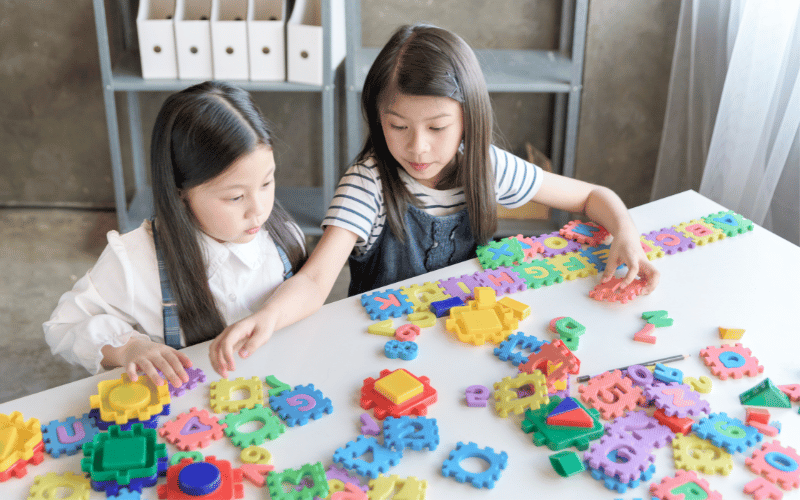Introduction: The Power of Playful Learning in a Child’s Development
In recent years, the significance of encouraging playful learning in children has gained increased attention from educators, parents, and researchers alike. This method of learning combines the excitement and fun of play with the benefits of educational enrichment, ultimately leading to more engaged, curious, and well-rounded young individuals. This comprehensive guide will delve into the art of fostering playful learning in kids, providing actionable tips, and shedding light on its numerous advantages.

Creating a Stimulating Environment: Setting the Stage for Playful Learning
1. Provide a variety of learning materials and toys
To promote playful learning, it is essential to offer children an assortment of age-appropriate toys and learning materials. These resources should cater to different interests and developmental stages, allowing kids to explore various subjects, from literacy and numeracy to science and the arts.
2. Designate a dedicated play area
Setting aside a specific area for play encourages children to feel secure and comfortable in their learning environment. This designated space should be clutter-free, organized, and filled with inviting materials that spark creativity and curiosity.
3. Encourage open-ended play
Open-ended play encourages children to use their imagination and think critically. Supplying them with open-ended materials, such as building blocks, art supplies, and dress-up clothes, allows them to create their own narratives and develop essential problem-solving skills.
The Role of Parents and Educators in Fostering Playful Learning
1. Actively participate in play
Parents and educators should take an active role in children’s play, asking open-ended questions, offering suggestions, and providing guidance when necessary. This involvement helps to nurture a child’s sense of curiosity and discovery.
2. Encourage teamwork and collaboration
Children learn valuable social skills when they work together towards a common goal. Facilitating group activities that require cooperation and communication helps them develop empathy, negotiation skills, and the ability to compromise.
3. Praise effort and progress, not just results
Fostering a growth mindset in children means focusing on their efforts and progress rather than solely on the end result. Praising their hard work, perseverance, and improvements builds self-confidence and resilience, encouraging them to take on new challenges.
Incorporating Technology in Playful Learning: Harnessing the Power of EdTech
1. Utilize educational apps and games
Educational apps and games can be a valuable addition to a child’s playful learning experience. Carefully selected apps that align with their interests and abilities can reinforce essential skills and introduce new concepts in a fun and engaging way.
2. Explore virtual and augmented reality
Virtual and augmented reality technologies offer immersive learning experiences that can spark curiosity and enhance children’s understanding of complex subjects. These tools can transport kids to new worlds, allowing them to explore and interact with their surroundings in a uniquely engaging manner.
3. Monitor screen time and balance with offline activities
While technology can be a powerful tool for playful learning, it’s essential to strike a balance between screen time and offline activities. Encourage children to participate in physical play, creative pursuits, and social interactions to promote well-rounded development.
FAQs on Encouraging Playful Learning in Kids
1. What is the appropriate age to start introducing playful learning activities?
Playful learning can be introduced at any age, as it is a natural and intuitive way for children to explore the world around them. The key is to adapt activities and materials to suit their developmental stage and interests.
2. Can playful learning activities be adapted for children with special needs?
Absolutely! Playful learning activities can be tailored to accommodate the unique needs and abilities of children with special needs. Collaborating with educators, therapists, and other professionals can help identify appropriate activities and modifications to ensure an inclusive and engaging learning experience for all children.
3. How can parents and educators assess the effectiveness of playful learning?
Assessing the effectiveness of playful learning involves observing children’s progress in various skill areas, including cognitive, social, emotional, and physical development. Regularly monitoring their engagement, interest, and improvement in these areas can provide valuable insight into the impact of playful learning activities.
4. Are there specific subjects or skills that benefit most from playful learning?
Playful learning can be applied across a wide range of subjects and skills. However, it is particularly effective in areas that require creativity, critical thinking, problem-solving, and collaboration, such as STEM subjects, language and literacy, and the arts.
5. How can parents and educators ensure that playful learning remains a positive experience for children?
To ensure that playful learning remains a positive experience, it’s crucial to maintain a supportive and nurturing environment. Encourage children to explore, make mistakes, and learn at their own pace while providing guidance and reassurance when needed. Celebrate their achievements and progress, fostering a growth mindset that values effort and improvement.
Conclusion: Empowering Children Through Playful Learning
Incorporating playful learning in a child’s education can significantly enhance their overall development, fostering creativity, curiosity, and critical thinking skills. By creating a stimulating environment, actively participating in play, and utilizing technology responsibly, parents and educators can unlock children’s true potential and set them on a path towards lifelong learning and success. As we’ve explored in this comprehensive guide, the power of playful learning cannot be underestimated. Embrace this approach, and watch your child thrive.